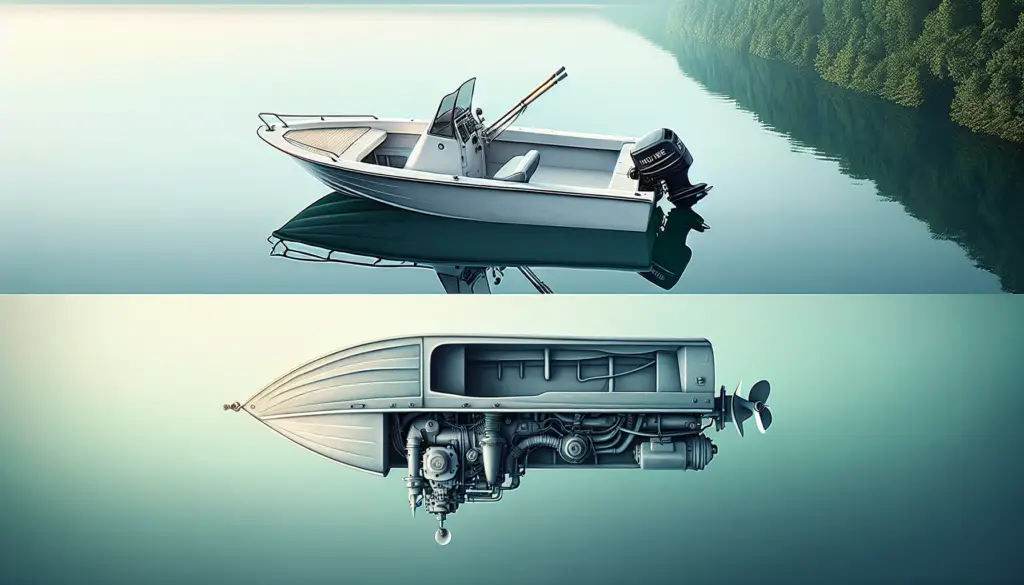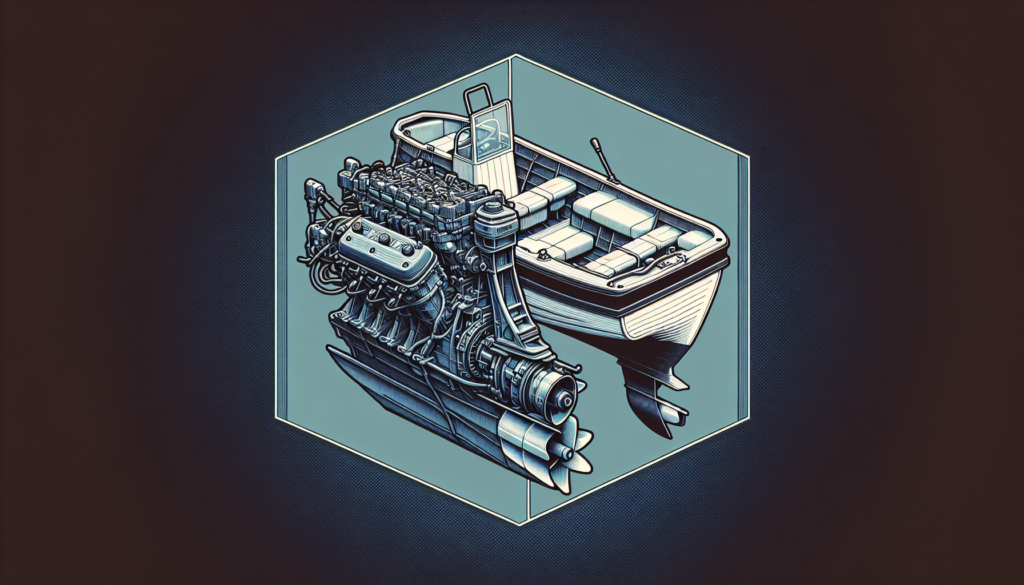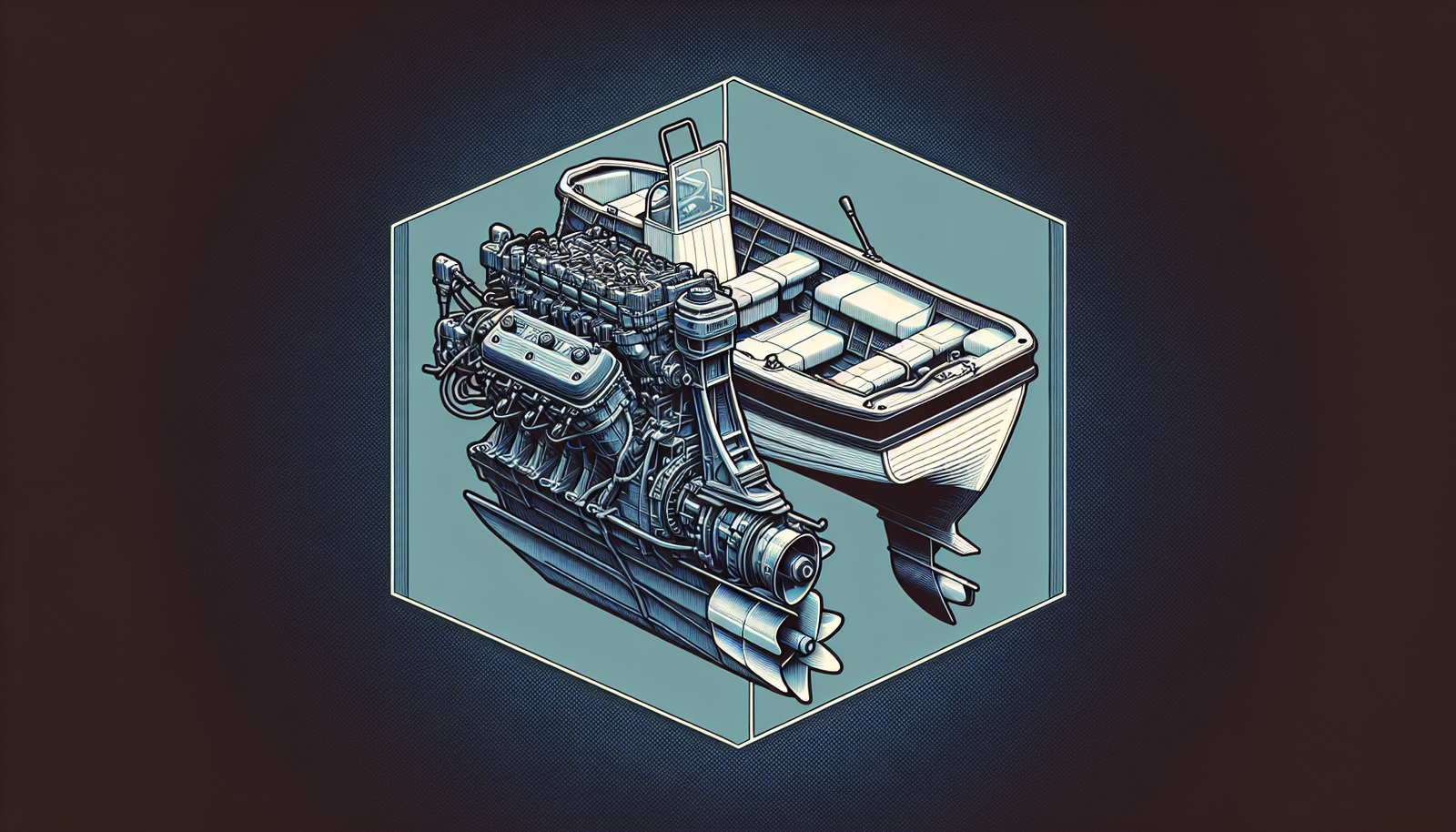Are you planning to acquire a new boat, or perhaps upgrade the engine of your current one? Knowing the main differences between outboard and inboard engines could mean the difference between a solid investment and a costly mistake. So, sit back, buckle up, and get ready for an enlightening journey through everything you need to make an informed decision – from power and performance to maintenance and cost in this comprehensive “Buyer’s Guide to Outboard vs. Inboard Boat Engines.”
Understanding Boat Engines
When you’re out sailing the open seas or cruising along a serene lake, it’s your boat’s engine that powers through the picturesque journey. But, what exactly is a boat engine, and why is it so quintessential?
Basic Definition of Boat Engines
A boat engine, also known as a marine engine, is the heart of your boat. It is a propulsion system for boats that generates power to move them forward or backward in water. Boat engines can work on petrol, diesel, or in some cases, electricity. The two main types of boat engines are outboard and inboard engines.
Importance of Boat Engines
Boat engines play a pivotal role in guaranteeing a smooth and efficient ride on the water. Without a reliable engine, your boating adventures can quickly hit a rough patch. A good engine ensures that you have the speed and responsiveness you need when you’re out on the water.
Different Types of Boat Engines
When talking about boat engines, the conversation often boils down to two common types – outboard and inboard engines. While both serve the same essential purpose, they have distinctive characteristics, benefits, and drawbacks. In this article, you will get to know everything about these two types of engines.
Introduction to Outboard Engines
Envisioned for versatility and accessibility, outboard engines are adored by many marine enthusiasts.
Definition of Outboard Engines
Outboard engines are detachable engine systems mounted on the boat’s stern. These self-contained units include engine, gearbox, and propeller. To steer, you simply rotate the entire engine horizontally.
History and Evolution of Outboard Engines
The outboard engine has deep historical roots, with Ole Evinrude patenting the first successful design in 1911. Fast forward to today, outboard engines have certainly evolved. With advancements in technology, these engines have become more robust, lightweight, and increasingly fuel-efficient.
Typical Uses of Outboard Engines
Outboard engines pack power along with portability, making them a top choice for smaller watercraft such as fishing boats, pontoon boats, and inflatables. They are especially useful on boats that need more space, as their external placement frees up room within the hull.

Pros and Cons of Outboard Engines
Benefits of Outboard Engines
Apart from room efficiency, outboard engines have numerous other benefits. They are easier to maintain, accessible for repair, and can be lifted out of the water, reducing the risk of corrosion. Their versatile design allows easy maneuverability, and the option to tilt prevents propeller damage in shallow waters.
Disadvantages of Outboard Engines
However, outboard engines carry a few downsides as well. They are generally louder and less powerful than their inboard counterparts. Plus, because they mount onto the back of your vessel, they can make the boat stern-heavy.
Ideal Conditions for Using Outboard Engines
Given their design and capabilities, outboard engines are well-suited for calm waters and are ideal for short to moderate boating journeys.
Different Brands and Models of Outboard Engines
Thrust, power, durability, or design, what constitutes the best outboard engine can differ from boater to boater.
Popular Outboard Engine Brands
Yamaha, Mercury, and Honda front the pack when it comes to popular outboard engine brands. These brands have consistently delivered reliable and high-performing products earning the trust of sailors worldwide.
Comparing Different Models of Outboard Engines
Each brand offers a range of engines with different horsepower, size, and features. When comparing, look at their power output, noise levels, fuel efficiency, and the technology used.
Innovations in Outboard Engines
In the race for the most progressive and cleanest-burning engines, technological innovation never stops. From digital throttle systems to joystick piloting, the advancements in outboard engines have gone above and beyond to enhance boating experiences.

Maintenance and Care for Outboard Engines
Good performance stems from regular maintenance and care. Upkeep is vital to ensure the longevity of your outboard engine.
Routine Maintenance Practices
These might include checking the propellers, changing the engine oil, inspecting the fuel lines, and flushing the engine after use.
Common Problems with Outboard Engines and their Solutions
Outboard engines aren’t immune to problems. Whether it’s overheating, corrosion, or oil-related issues, when an issue crops up, always consult your manual or a marine mechanic.
Essential Accessories for Outboard Engines
Engine covers, mount kits, fuel-system stabilizers, are just a few accessories that can improve your engine’s performance, life span, and efficiency.
Introduction to Inboard Engines
Inboard engines secure a spot for those who demand robust performance balanced with a quieter operation.
Definition of Inboard Engines
Unlike outboards, an inboard engine is mounted inside the boat, either in the center or towards the back. It directly drives a propeller shaft that protrudes from the hull.
History and Evolution of Inboard Engines
Inboard engines date back to the late 19th century and continue to remain popular today, especially in larger vessels. There’s been a tremendous evolution in sophistication, power production, and efficiency.
Typical Uses of Inboard Engines
Inboard engines are typically found in larger boats like yachts and powerboats, where more horsepower is required.

Pros and Cons of Inboard Engines
There are some distinct benefits and drawbacks to using inboard engines.
Benefits of Inboard Engines
Inboard engines are usually more powerful and quieter than outboards. They’re tucked away in the hull of the boat, freeing up space at the stern.
Disadvantages of Inboard Engines
On the flip side, inboard engines are harder to maintain because they are not as easily accessible. Also, unlike outboards, they cannot be lifted out of the water, making them susceptible to corrosion or wear.
Ideal Conditions for Using Inboard Engines
An inboard engine is your go-to if you frequent rough waters or indulge in extended boating trips.
Different Brands and Models of Inboard Engines
Again, what categorizes as the finest inboard engine vastly depends on personal preferences.
Popular Inboard Engine Brands
Mercury, Volvo Penta, and Yanmar are the big names to consider when it comes to inboard engines.
Comparing Different Models of Inboard Engines
The ideal approach is to evaluate them based on their power output, fuel efficiency, noise levels, and maintainability.
Innovations in Inboard Engines
Inboard engines haven’t been left behind in the rush of innovation. Today’s models are exceedingly advanced with new-age features like corrosion-resistant materials and digital control systems.
Maintenance and Care for Inboard Engines
Maintaining an inboard engine may require professional help due to their less accessible positioning.
Routine Maintenance Practices
Typical routines may involve regular oil changes, filter replacements, and routine inspection of the belt and hose.
Common Problems with Inboard Engines and their Solutions
Common problems might include issues with steering, the propeller, or overheating. As always, consult your manual or a professional when issues arise.
Essential Accessories for Inboard Engines
Consider investing in engine flushers, motor mounts, or stabilizing additives to ensure optimum performance.
Comparing Outboard vs. Inboard Engines
When you’re fishing for the perfect choice, it’s crucial to weigh the attributes of outboard and inboard engines.
Performance Comparison
In terms of raw power, inboards generally have more. However, outboards offer flexibility and versatility to suit a range of conditions and boat types.
Price Comparison
Outboards tend to be less expensive upfront, but the total cost should also consider factors like fuel efficiency and maintenance costs.
Longevity and Durability
Both engine types can be long-lasting and durable with adequate care and proper maintenance. However, inboards win out slightly due to their enclosed and protected design.
User Reviews and Opinions
Lastly, spend time checking out user reviews and opinions. This will give you real-life insight into how these engines perform in the long run.
Boat engines, whether outboard or inboard, bring life to your boat. Making the right choice depends on your specific needs and situations. So, weigh the options, consider your priorities, and tune in to the best companion for your boating adventures.

